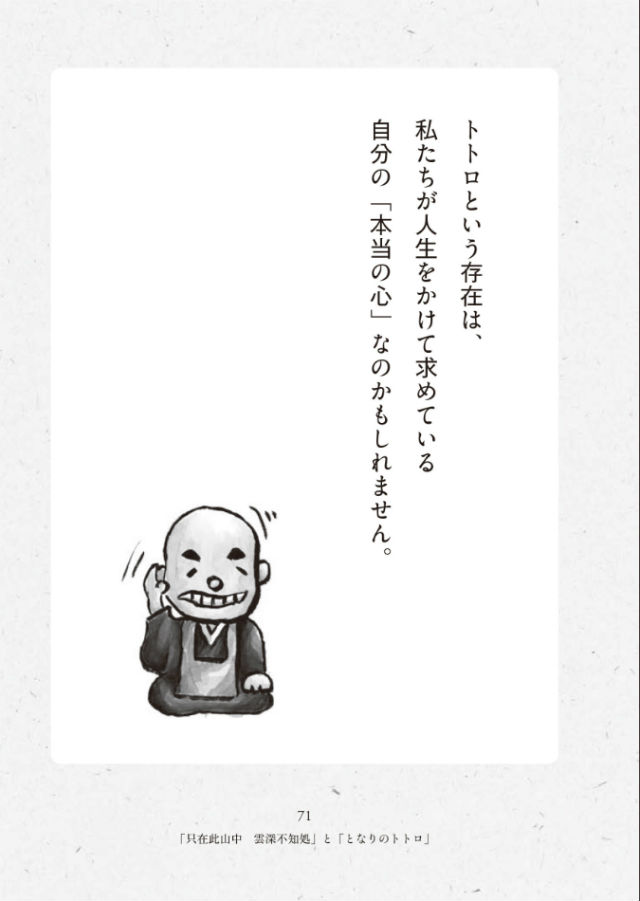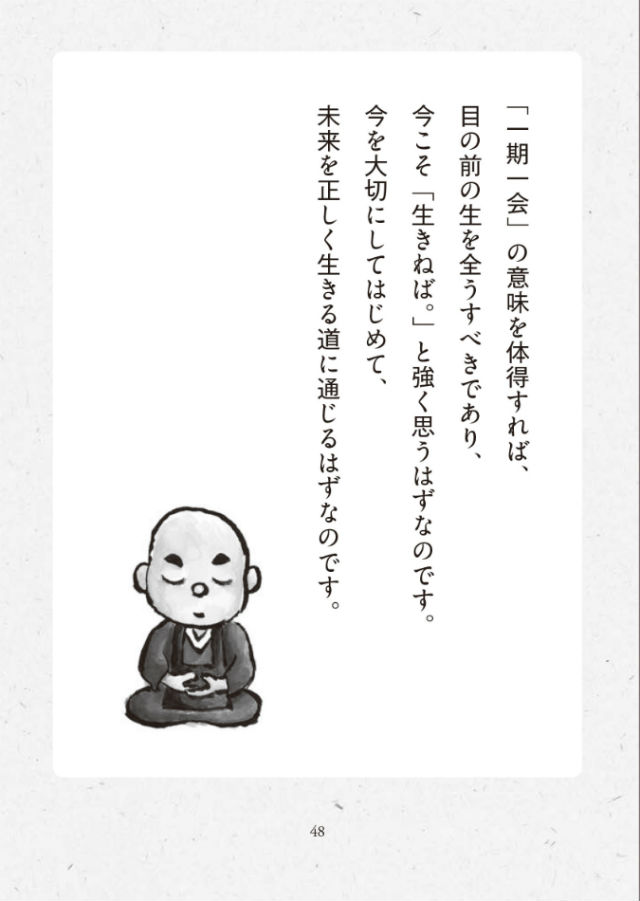At first glance Studio Ghibli and the world of zen don’t really have much in common. One is a way of life, and the other a huge animation company that has produced some of the world’s most prominent animated films. However, despite their differences, right at the core of each is a shared idea of positivity.
Shinsuke Hosokawa is a priest belonging to the Rinzai sect of the Myoshinji Buddhist school who sees a common message that exists between the two organizations; “Life is always worth living, even in the most chaotic of times.” In his latest book – 禅の言葉とジブリ/Zen no Kotoba to Ghibli (Zen Words and Ghibli) – Hosokawa touches on the similarities between the two.
Hosokawa has been a big Ghibli fan from his childhood, and has continued to appreciate the productions from the studio even after he entered the Rinzai sect as a Zen priest. His admiration of the animation company is rooted in what he believes is a Zen philosophy that is shared by the studio’s directors; Hayao Miyazaki, Isao Takahata and Goro Miyazaki. Within many of Studio Ghibli productions, Hosokawa is able to find reflections and hidden messages of Zen Buddhism.
Zen no Kotoba to Ghibli contains 14 essays written by Hosokawa, in which he explains the common points and similarities between Ghibli works and Zen philosophy in an easy-to-understand manner.
The comparisons are complemented by cute illustrations of buddhist monks designed by Toshio Suzuki.

A translated excerpt from Hosokawa on his new book:
“You can find a world of ‘zen’ in Studio Ghibli productions.
When I took the time to review my favorite Ghibli anime, I discovered a lot of depth and new things that I didn’t notice when I first watched them.
2020 is surely an unforgettable year for all of us. Our anxieties and worries never exhaust as our futures remain cast in a shadow of uncertainty. Even so, Ghibli’s message, “this world is worth living for”, continues to push us gently forward.
Of course, when something unexpected happens, we get lost and confused. But how many times have you actually ended up doing what you expected in your life? Life is always uncertain, and full of unexpected happenings. And when the unexpected happens, we have no choice but to concentrate and live with what is ‘here and now.’”

In the second half of the book, Hosokawa and the senior priest of Engakuji, Master Yokota Minamimine, discuss the Coronavirus era and zen. The valuable dialogue sees the two introduce how Zen has taken to the internet following the outbreak of the virus and also includes their conversations on finding the motivation to continue thriving during the current difficulties.
Zen no kotoba to Ghibli is available to purchase online from Tokuma Shoten via Amazon or Tsutaya for 1,760 yen.
Read more stories from grape Japan.
— AniPic! digital anime image ownership platform launches with “Great Pretender”
— Japanese artist’s illustrations dare you to find fantasy in ordinary Tokyo apartments
— Cardboard shrine house gives your cats their own place to feel like a Shinto god
- External Link
https://grapee.jp/en/
© grape Japan

